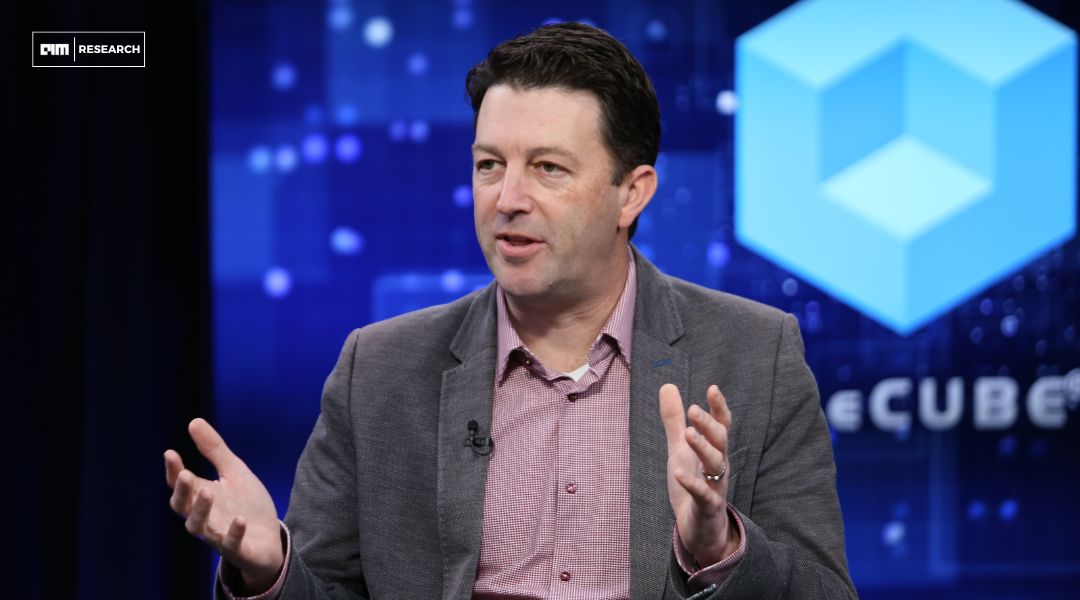
Is Andy MacMillan the Only Tech CEO Not Buying the Agentic AI Hype?
- By Anshika Mathews
- Published on
We are being sold on the idea of running before we can walk or crawl.


While enterprise software giants rush to deploy autonomous AI agents, Alteryx is taking a more grounded approach. CEO Andy MacMillan has made it clear: the company is not interested in racing to replace humans with AI. Instead, it is focused on building trust, transparency, and control into the foundations of enterprise analytics.
“We are being sold on the idea of running before we can walk or crawl,” MacMillan told Tech Monitor. His caution stands in contrast to the dominant trend in enterprise tech, where companies like Salesforce, Microsoft, and Snowflake are rolling out AI agents capable of reasoning and decision-making without human oversight.
Alteryx’s strategy centers on a new platform called Alteryx One. Rather than pitching full autonomy, the company is offering structured workflows, governed data access, and analyst-friendly tools that integrate AI in support roles, not as replacements. It is an intentional move rooted in real-world implementation challenges, and in MacMillan’s own experience with generative AI.
He joined Alteryx in December 2024, shortly after the company was acquired for $4.4 billion by Clearlake Capital and Insight Partners. Having previously served as CEO of UserTesting and held senior roles at Salesforce and Oracle, MacMillan had seen both the promise and the limits of large language models in enterprise use. “It was good at using creative content to make more creative content,” he said. “But it wasn’t good at using data to identify which service teams were suffering a productivity challenge.”
That disconnect between the power of AI models and the accessibility of data shaped his approach at Alteryx. Instead of betting on fully autonomous agents, Alteryx is positioning itself as a data steward, helping organizations build the infrastructure to make AI trustworthy and explainable.
At its Inspire 2025 event, the company unveiled Alteryx One, which brings together analytics, data preparation, governance, and automation tools under a single platform and license. Features include the AI Control Center, Magic Reports, Alteryx Copilot, and integrations with Databricks, Snowflake, and Azure Synapse. Each feature is designed to improve accessibility and usability for analysts and domain experts, not just developers.
“We enable business users to build workflows that are visual in nature,” MacMillan said. “So anyone can look at a workflow that’s plugged into AI and quickly understand the data involved in the process.”
This approach draws a clear contrast with Salesforce’s Agentforce, Microsoft’s AI copilots, and the orchestration layers being developed by Snowflake and Databricks. Those systems are moving rapidly toward full automation. Alteryx, by contrast, is focused on enabling teams to maintain visibility and control over the logic driving their AI-powered decisions.
Chief Product Officer Ben Canning pointed out a critical gap: “There is about 80 percent of the knowledge workers out there that their data platform just can’t touch. It’s too complicated. There’s too much code. They don’t have tools that analysts and business users can really use.”
Alteryx sees that gap as its core opportunity. Instead of building agentic systems that run independently, it is giving business users a way to engage with AI in governed, explainable ways. The AI Data Clearinghouse, a central element of the company’s vision, is a framework for understanding, transforming, and managing data that enters AI workflows.
MacMillan’s stance is not about rejecting innovation. Alteryx has launched AI-assisted features like Magic Reports and GenAI Tools that embed generative capabilities into its platform. But these tools are designed to assist, not automate entire functions. The company’s focus is on augmenting the analyst, not eliminating them.
“Companies say they want to be AI-first, and then say none of their data will go into the AI,” MacMillan said. “We help them bridge that gap.”
MacMillan expanded on that philosophy in a recent LinkedIn post, writing: “The real transformation is being led by business users. The same analysts and power users who originally adopted and extended Salesforce are now the ones building AI agents—using low-code and no-code tools to rethink processes from the ground up. This isn’t about adding AI to legacy systems. It’s about empowering teams with data and AI to reimagine how work gets done.”
There are risks to this approach. Investors expect velocity. Competitors are moving fast. But Alteryx’s leadership team is building for a customer base that values control over hype. Their tools are designed for analysts who still need to know what their systems are doing, and why.
“AI can’t just be a black box,” MacMillan said. “Companies that simply load all of their data into AI will learn some very hard lessons, very publicly.”
📣 Want to advertise in AIM Research? Book here >
Cypher 2024
21-22 Nov 2024, Santa Clara Convention Center, CA
A Vendor Briefing is a research tool for our industry analysts, and an opportunity for a vendor to present its products, services and business strategies to analysts who cover the vendor specifically or a related technology or market.
AIM Research encourages technology vendors and agencies to brief our team for PeMa Quadrants, when introducing a new product, changing a business model, or forming a partnership, merger, or acquisition.


